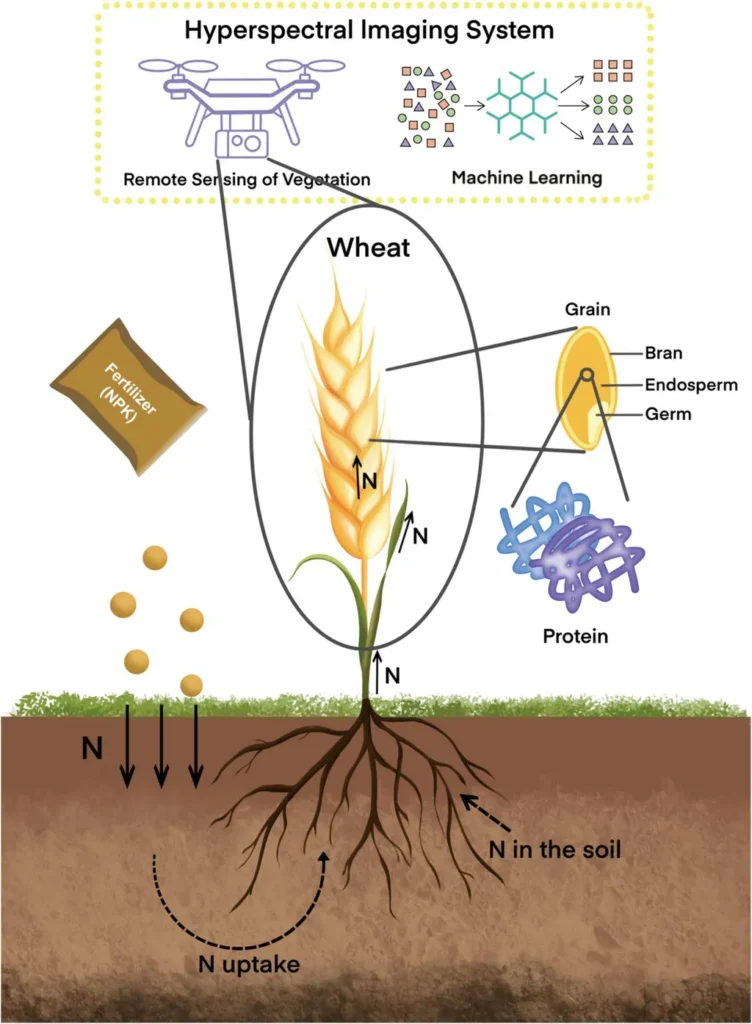In the heart of China, researchers at the National Engineering and Technology Center for Information Agriculture (NETCIA) are tackling a global challenge: the rapid and accurate identification of wheat foliar diseases. Led by Sen Zhuang, a team of scientists has developed a novel approach that combines hyperspectral data with advanced machine learning models to differentiate between multiple wheat diseases, a breakthrough that could revolutionize precision agriculture and bolster food security.
Wheat, a staple crop that feeds billions worldwide, is under constant threat from foliar diseases like powdery mildew, stripe rust, and leaf rust. These diseases can significantly compromise yield and quality, posing a substantial risk to global food supplies. Traditional methods of disease identification are often time-consuming and labor-intensive, making them impractical for large-scale agriculture. However, Zhuang and his team have harnessed the power of technology to streamline this process.
The researchers conducted field experiments from 2017 to 2024, employing artificial inoculation to create a standardized hyperspectral database of wheat foliar diseases. This database, classified by disease severity, served as the foundation for their innovative approach. “We needed a method that could not only identify the presence of disease but also differentiate between multiple diseases,” Zhuang explained. “This level of precision is crucial for targeted treatment and management strategies.”
To achieve this, the team employed four feature selection methods—continuous wavelet projection algorithm (CWPA), continuous wavelet analysis (CWA), successive projections algorithm (SPA), and Relief-F—to extract spectral features from the hyperspectral data. These selected features were then used as predictors in three machine learning models: random forest (RF), k-nearest neighbors (KNN), and naïve Bayes (BAYES).
The results were promising. The combination of CWPA and KNN proved to be the most effective, achieving an overall accuracy of 77% and a map-level image classification efficacy (MICE) of 0.63. This method allowed the researchers to discriminate between disease-infected and healthy leaves using just two key features: 668 nm at wavelet scale 5 and 894 nm at wavelet scale 7.
The implications of this research are far-reaching. By providing a rapid and accurate means of disease identification, this technology could enable farmers to implement targeted treatments, reducing the need for broad-spectrum pesticides and promoting more sustainable agricultural practices. “This is not just about improving crop yields,” Zhuang noted. “It’s about creating a more efficient, sustainable, and resilient agricultural system.”
The study, published in the journal *Remote Sensing* (translated as 遥感 in Chinese), represents a significant step forward in the field of precision agriculture. As the global population continues to grow, the demand for food will only increase, making technologies like this all the more vital. By leveraging the power of hyperspectral data and machine learning, researchers are paving the way for a future where food security is not just a hope, but a guarantee.
This research could shape future developments in several ways. Firstly, it highlights the potential of hyperspectral imaging and machine learning in agriculture, encouraging further exploration and innovation in this area. Secondly, it underscores the importance of interdisciplinary collaboration, bringing together experts from fields like plant pathology, remote sensing, and data science. Lastly, it offers a tangible example of how technology can be used to address real-world challenges, from improving crop yields to promoting sustainable agricultural practices.
As we look to the future, the work of Zhuang and his team serves as a reminder of the power of innovation and the potential of technology to transform our world. In the face of global challenges, it is through such advancements that we can hope to create a more secure, sustainable, and prosperous future for all.

